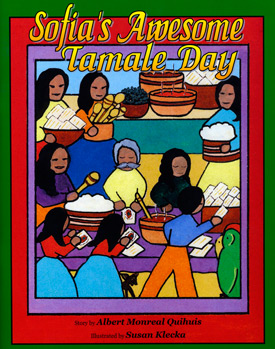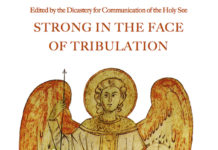Illustrated book brings Mexican tradition into full color
This time of year is, perhaps, filled with more ritual than any other. Yearly Christmas cards are written, ornaments are picked through and reflected upon, and certain meals are prepared whose seasonal presence remains a constant in the home.
Being of Irish and German extraction, and having as a child one of those annoyingly plain and picky palates, it was years before I sampled what surely is one of the greatest Christmas delicacies — at least in our neck of the woods: The Christmas Tamale.
It took me years to properly appreciate the tastes and textures of Mexican cuisine even though — as is true for any Phoenician — I was rarely far from it. And at every Christmas or Easter party on my cousin and best friend’s other side of the family (which owned and ran Mexican restaurants) there was always a plate piled high with tamales.
I never got an answer apart from a disinterested shrug whenever I asked why tamales were associated with Christmas, and after a few minutes of Googling, I’m still not entirely sure. Local author Albert Monreal Quihuis may have an idea with his new book “Sofia’s Awesome Tamale Day.”
The story, fancifully set in the little town of Santo Poco Loco on the banks of the Que Milagro River, focuses on Sofia and her Abuelita, with whom she lives. Pepe, a talkative parrot, makes a third roommate. It’s nearing Christmas day when Abuelita receives some terrible news: Her sister, who lives in a nearby pueblo, is very ill. Abuelita rushes off to be by her, and delegates the yearly tamale making to Sofia.
“[Sofia] remembered the making of many tamales for Christmases past. There was so much excitement with everyone talking, getting caught up with the latest gossip, sharing stories many times, telling the same stories and laughing all over again,” Quihuis writes.
“The children would be playing games and running all over the place. By the time they were finished, everyone would have plenty of masa all over them — including Pepe, who liked to squish the masa between his toes,” he writes.
Sofia juggles her newfound responsibility well. She draws up a list of ingredients, hies herself to the market and remains enviably equanimous with the talks-too-much parrot. Finally, she extends invitations to various family members to help with the tamale production.
As the book makes clear — and perhaps it’s a clue as to why tamales are made around the times of year when families are drawn together — tamale making is labor intensive. Sofia et al. begin by making a large batch of chili con carne, which is then refrigerated overnight. The next day, Eduardo prepared the masa. It’s ready when a small dollop of it floats to the top of a glass of water.
Others prepare the hojas, or corn husk, that will hold the masa and filling. Finally, everybody begins to put the tamales together in an assembly line. Throughout, Pepe won’t shut up, and even plays a mean trick on one of the twins, whose overwrought reaction is a bit much and almost — almost — has me siding with Pepe. But really, I have no clue how Sofia and Abuelita can live with him.
“Sofia’s Awesome Tamale Day” is beautifully illustrated by Susan Klecka, whose use of bold colors accents the book wonderfully. The book is also printed on high quality paper, which really allows the illustrations to shine.
The book is a great little celebration of those traditions that draw families and friends together over the Advent and Christmas seasons. Be warned, though. It can also be very hunger inducing. Now, who wants to bring some tamales over to my decidedly Anglo house?
—
“Sofia’s Awesome Tamale Day,” by Albert Monreal Quihuis. Illustrated by Susan Klecka (Winmark communications 2011) $15. Available on the Web at www.winmarkcom.com/sofiastamales.htm.
Media critic Andrew Junker is a regular contributor to The Catholic Sun. Send e-mail to letters@catholicsun.org.






